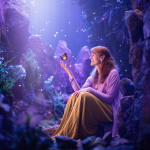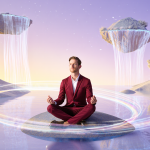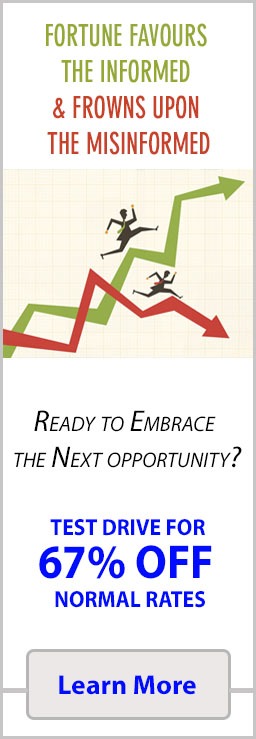Editor: Vlad Rothstein | Tactical Investor
Iceland Porn: The Cold Front Against Digital Dopamine
While the rest of the world drowned in an endless scroll of synthetic sex and algorithm-fed lust, Iceland did something unthinkable: it paused. A nation better known for glaciers and geysers suddenly took aim at the global dopamine casino—specifically, the porn industry turning young minds into fried circuits of hyper-stimulated confusion.
This wasn’t a moral panic. It was a systems check.
Interior Minister Ogmundur Jonasson didn’t call for puritanism—he called for triage. Iceland saw what most countries didn’t dare admit: online pornography wasn’t just entertainment—it was a weaponised form of neurological erosion, hijacking adolescent brains before they’d even figured out what desire was.
So Iceland began drafting legislation not to wag fingers but to pull plugs. Content filters. Payment restrictions. Bans on using Icelandic credit cards for pay-per-view debauchery. The aim? Disarm the delivery systems, not demonise the instinct.
Because here’s the thing no one wants to say out loud: porn in its current form isn’t sex—it’s sedation.
The damage wasn’t just pixels on screens. It was psychological distortion, especially among boys and young men marinating daily in hyper-aggressive imagery. What begins as curiosity mutates into dependency, then desensitisation, then behavioural mimicry. That last stage? That’s when fantasy leaks into violence. And that’s what Iceland was trying to stop before it spilt.
Jonasson didn’t call for censorship—he called for consciousness. A break in the loop. A national firewall against an unregulated global flood that’s shaping perceptions of intimacy like a softcore algorithmic lobotomy.
It was controversial. Of course it was. Any move that disrupts the dopamine economy is. But Iceland wasn’t here to be popular. It was here to protect the psyche of a generation before the damage calcified into culture.
Porn Isn’t Personal—It’s Political: Iceland’s Civil Rights Gambit
When Professor Gail Dines landed in Reykjavik, she didn’t bring a sermon—she got a scalpel. In a world tiptoeing around the porn industry like it’s just another Netflix category, Dines stood at the podium and sliced through the illusion: this wasn’t about freedom—it was about violation.
Not just to viewers, but to the women on the screen.
Iceland, she said, was doing what no other so-called free country had the guts to do—calling pornography what it was: an industrial-scale distortion of consent, dignity, and identity. Not kink. Not culture. Colonisation of the female body, dressed up as choice, sold back as entertainment.
Dines didn’t mince words. This was civil rights in disguise. And every frame of weaponized pleasure had a cost—paid by the woman who was told to smile through degradation while her pain got monetized.
Enter Dagbjört Ásbjörnsdóttir, a sexologist who wasn’t theorising from a tower. She was in the trenches—talking to the youth, the parents, the confused teenagers whose ideas of sex were being programmed by high-speed broadband and low-resolution ethics.
She didn’t preach repression. She pushed for reintegration—to reclaim sex from the synthetic scripts of online smut. Her concern wasn’t just about kids watching porn. It was about what porn was teaching them to expect, to become, to accept.
And here’s the bitter truth she wasn’t afraid to say: if kids learn about intimacy from porn, they’re not learning about connection. They’re learning about domination, performance, submission, and pain—often before they’ve even had their first kiss.
So Iceland doubled down—not with shame, but with strategy. The filters weren’t about purity. They were about to pause. About giving a generation room to form their own narrative before a trillion-dollar dopamine factory writes it for them.
From Booze to Bots: Iceland’s Evolution from Substance to Screen Addiction
Chapter 1: Turning Tides
Two decades ago, Reykjavik Friday nights looked like battle zones—teenagers in overdrive, vodka-fueled and out of control. Psychologist Guðberg Jónsson and Prof. Harvey Milkman say teens were Europe’s top drinkers—42% of 15‑16 year‑olds were drunk in a month in 1998. By 2016, that figure sank to 5%, cannabis use dropped from 17% to 7%, and daily smokers crashed from 23% to 3%. That shift didn’t come from laws—it came from constructing alternatives: pools, ice rinks, clubs, music, art, and structure. A structure that displaced chaos.
Chapter 2: Enter the Porn Frontier
Fast-forward to the 2020s. Iceland turns its lens from booze to broadband. In 2013, proposals to filter porn and outlaw domestic production hit roadblocks—but a deeper problem remained: not everything toxic is visible. Porn is stealth. It infiltrates bedrooms, rewires brains, and mutates expectations.
Recent efforts have focused on filters, payment curbs, and monitoring, but enforcement against a global, stealthy industry is proving impossible.
Chapter 3: Dopamine, Distortion, Disease?
Data is mixed, but the stakes are clear:
- Harm side: Brain scans link heavy porn use to reduced gray matter in reward/decision areas, desensitization, and higher cravings for extreme content (phys.org). Nearly 23% of men under 35 report porn-related erectile dysfunction and increased depression (nypost.com). Violent porn is linked to early aggressive sexual behavior among children—even four‑year‑olds mimicking adult acts (theaustralian.com.au).
- Counterpoint: Large-scale Croatia study (3,500 adolescents over 3 years) found porn didn’t drive risky sex or deep mental harm for most (reddit.com). And moderate use has been associated with stress relief or sexual exploration (verywellhealth.com).
Chapter 4: A Nordic Blueprint in Flux
Iceland tried filters in 2013—but public and legal pushback, plus technical hurdles, stopped full implementation (en.wikipedia.org).
Fast forward to 2025: Minister Halla Gunnarsdóttir argues filtering porn is feasible—“If we sent a man to the moon…” she says. However, resistance remains fierce: privacy advocates and free-speech defenders argue that filters erode rights.
Chapter 5: Health or Hype? The Balanced View
Risks:
- Porn as supernormal stimulus: triggers dopamine hijacks, prizing novelty and eroding satisfaction (en.wikipedia.org, en.wikipedia.org).
- Mental health: addiction-like patterns, shame, depression, disrupted relationships (phys.org).
- Aggression: violent content drives dangerous sexual norms and may lead to lethal practices such as strangulation (adelaidenow.com.au).
Potential Benefits:
- When consumed consciously, porn can support exploration, enhance intimacy, and relieve stress (en.wikipedia.org).
- Moderate users—especially within structured contexts like education—don’t see clear harm.
Chapter 6: What Iceland Can Learn
Iceland’s youth strategy wasn’t about blanket bans—it was about building substitutes: parks, pools, after-school, and community.
For porn? The next wave needs more than filters. We need digital literacy programs like those recommended in Spain and the EU—teaching children how to navigate distortion, consent, and genuine intimacy.
Wrap-up: Iceland’s past victory over booze came through structure, not bans. Now it’s entering a territory with deeper psychological undercurrents. Filters are a start—but the real solution is education, engagement, and empowerment. Not suppression. Not sermons. A system that gives youth tools to understand what porn is—and what it isn’t.
Conclusion: The Screen, the Scar, and the Soft War
Iceland once fought a war with vodka. Now, it’s squaring off with pixels—only this time, the enemy isn’t loud and staggering through alleyways. It’s silent, shapeshifting, always one tab away.
Porn doesn’t kick in your door like alcohol did. It whispers through earbuds. It rewires from the inside out. We’re not dealing with a substance you ingest—we’re dealing with a behavioural drug that builds its maze, layer by layer, novelty by novelty.
Dopamine doesn’t care about decency. It craves escalation. And porn—algorithmic, endless, boundary-erasing porn—is built to feed that craving until the user no longer remembers what real touch, real intimacy, or real satisfaction feel like. It’s a casino of climax. But the house always wins.
Iceland’s attempt to block it—like trying to plug a volcano with a cork—failed. Filters broke. Free speech roared. VPNs laughed.
But maybe that failure was a lesson.
Just like Iceland’s teens didn’t stop drinking because booze got banned—they stopped because life got better. Because the state built something stronger than addiction. Structure. Purpose. Replacements.
So what if the real strategy isn’t digital Puritanism, but digital powerlifting? Teach teens how to decode the trap. Show them what distorted love looks like. Build places—real or virtual—where human connection matters more than clicks.
Because here’s the truth:
If we don’t give them a world better than porn, they’ll keep choosing porn.
Not because they’re broken.
But because that’s what dopamine does when meaning is missing.
So Iceland, if you’re listening: you won Round One. Now it’s Round Two: same opponent, different mask.
The new battlefield? The brain.
The new weapon? Truth.
And the clock is already ticking.
Other Articles of Interest













